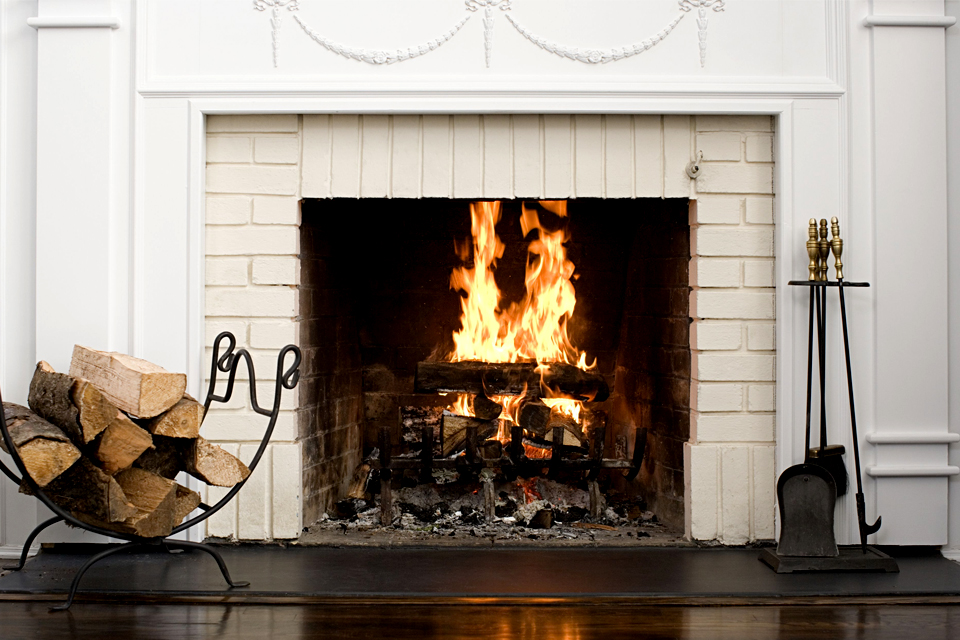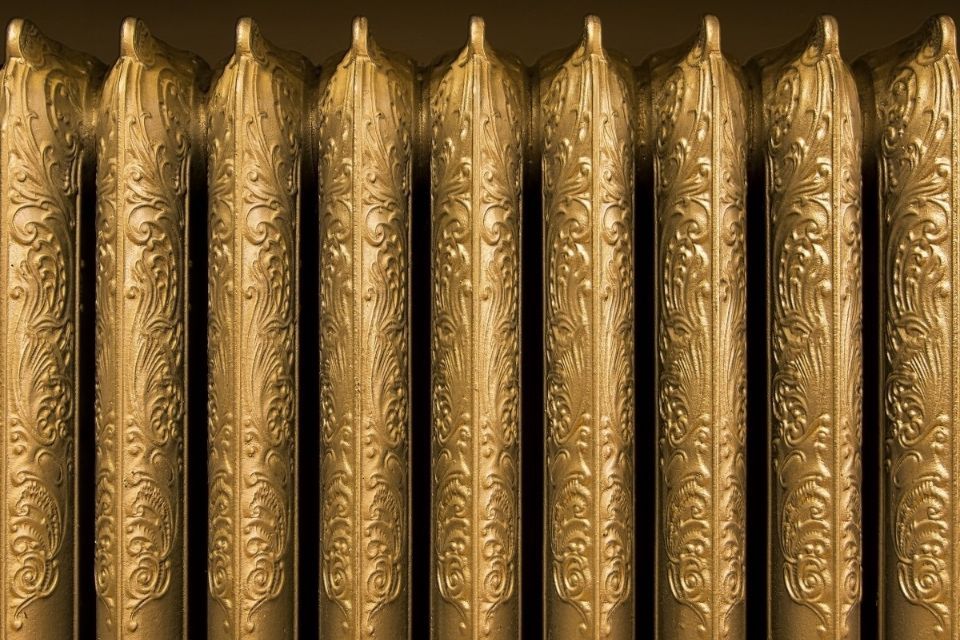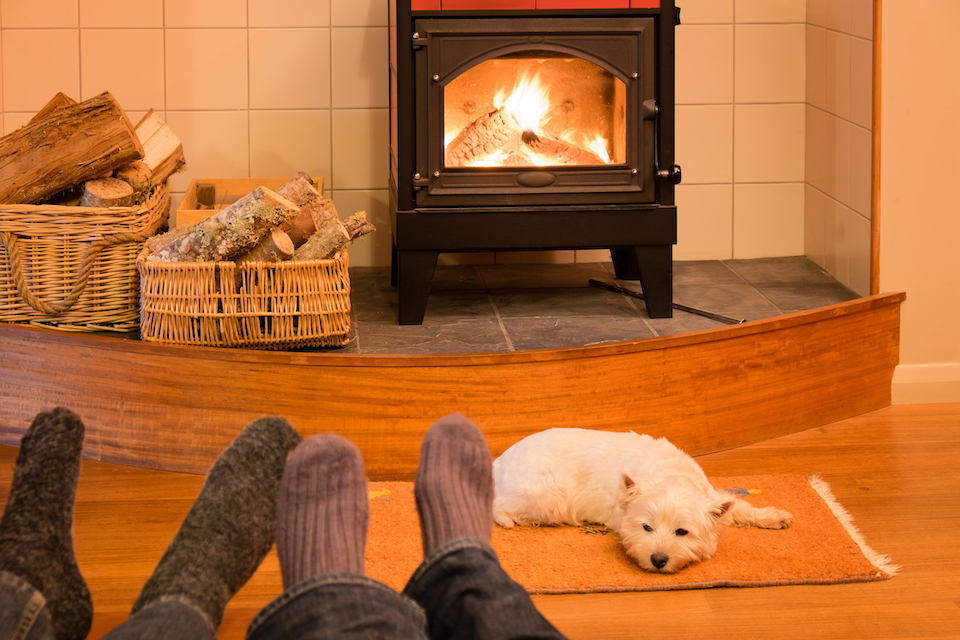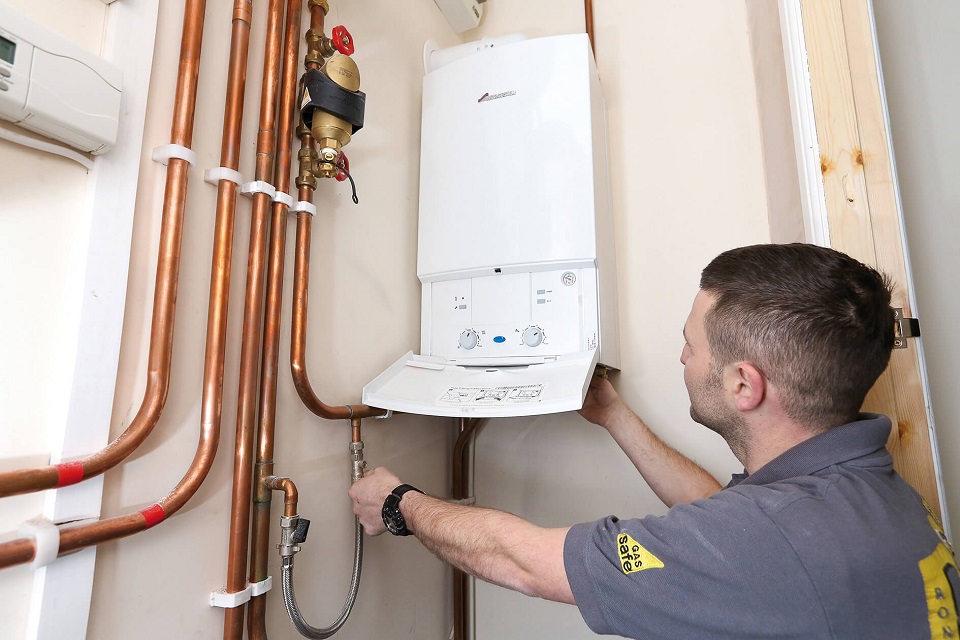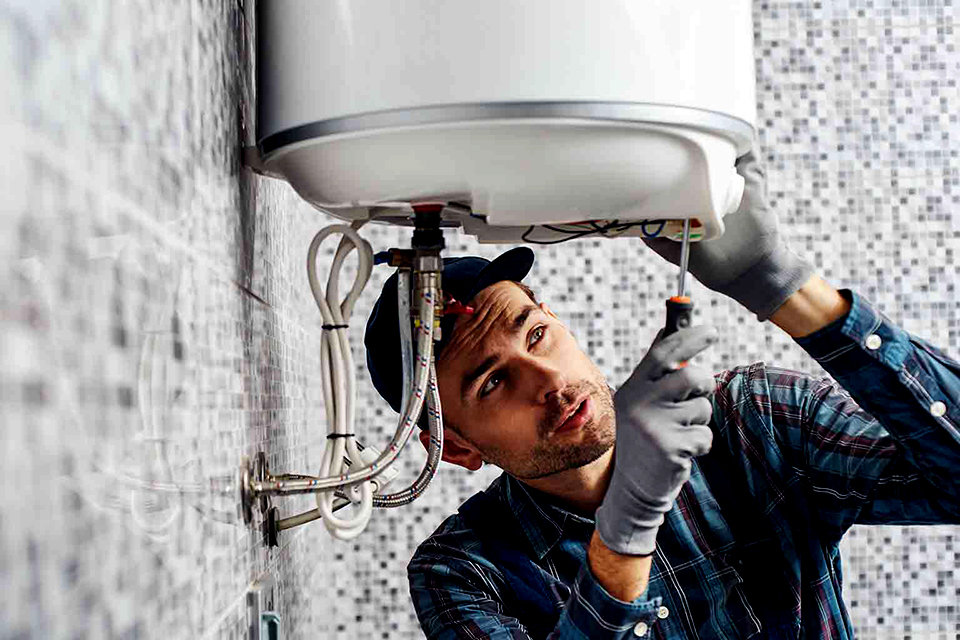How Much Does it Cost to Install a Fireplace?
The average cost to install a fire in your home will depend on the type of fire that you choose, the size of the fire, and your location in the UK. If there is any extra pipework needed, then this may result in some additional costs.
If you need extra pipework to accommodate your new fire, this may result in some additional costs.
The labour costs of installing a fire in your home are usually around £50-£100, and a typical installation will usually take around 2-3 hours to complete.
What else do you need to consider?
If you are installing a gas fire, then you will need to get someone to inspect the lines, flues, and wiring to ensure that they are all safe.
Labour costs for installing a new fire are typically higher in London than other areas of the UK.
The total cost for installing a new fire in your home will usually fall somewhere between £300-£700.
Fire Installation Prices
The table below shows the prices that you can expect for various different fire installation jobs:
| Job Description | Average Cost |
|---|---|
| Install a new gas fire – fit only | £150-£300 |
| Remove gas fire and install a new wall hung flueless gas fire | £200-£400 |
| Annual gas fire service | £60-£100 |
| Remove gas fire and cap off gas pipe | £50-£100 |
| Open fire installation | £350-£600 |
| Outset living flame gas fire installation | £400-£800 |
| Glass-fronted gas fire installation | £1000-£1800 |
| Flueless gas fire installation | £650-£1500 |
| Balanced flue gas fire installation | £1000-£1600 |
| Power flue gas fire installation | £1100-£2000 |
| Electric fire installation | £400-£3000 |
- How Much Does it Cost to Install a Fireplace?
- What are the Supply Costs of a Fire Installation?
- What are the Additional Costs of Installing a Fireplace?
- Tradesperson Costs for Installing a Fire
- How Long Does It Take to Install a Fireplace?
- Types of Fire
- Benefits of Installing a Fire
- Gas vs Electric Fireplaces: Which is Right for You?
- How much Does It Cost to Remove a Fire?
- FAQs
- Sources
What are the Supply Costs of a Fire Installation?
The main supply costs for a fireplace installation includes the cost of the actual fire itself. This is typically bought by the homeowner before the installation.
Below is a table showing the average costs for various types of fireplaces:
| Type of Fire | Average Cost |
|---|---|
| Open front gas fire | £200-£400 |
| Outset living flame gas fire | £200-£700 |
| Glass-fronted high-efficiency gas fire | £700-£1000 |
| Flueless gas fire | £600-£1000 |
| Balanced flue gas fire | £800-£1400 |
| Power flue gas fire | £900-£2000 |
| Electric fire | £100-£2000 |
What are the Additional Costs of Installing a Fireplace?
There are several additional costs that you may need to think about when it comes to installing a new fire. Below is a list of the additional costs that may come up with this type of work:
Chimney Repair Costs
If you are planning on installing a new fire at your home, then you may need to make some repairs to your chimney during the process to ensure your new fire works appropriately and effectively.
The costs for chimney repairs will depend on the type of work that needs to be done. It will cost you around £15-£20 per metre to purchase a stainless steel flexible liner.
If you need a pumice liner, this will cost around £12-£19 per liner and a clay liner will cost around £20-£40 per liner.
A chimney flue will cost around £300-£600.
If you need new brickwork on the chimney, this will cost around £40-£100, depending on the amount of damage.
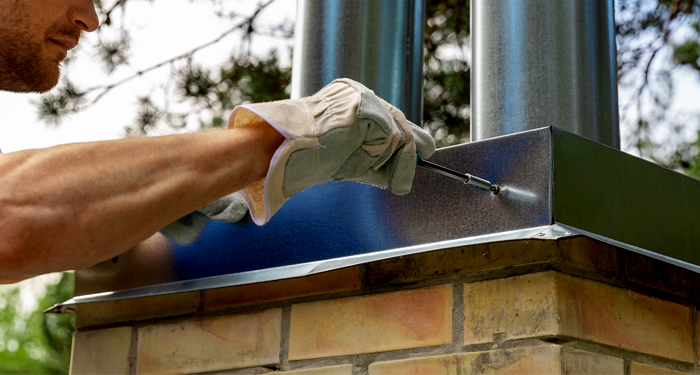
Gas Safety Certificate
If you are installing a new gas fire, then you will need to hire a professional Gas Safe engineer to complete a gas safety check. Once this check has been completed, you will be issued a Gas Safety Certificate.
The price for a Gas Safety Certificate is usually around £30-£150 depending on the contractor that you choose and your location in the UK.
Electric Safety Certificate
If you are installing a new electrical fire, then you should hire a professional electrician to look over the fire and issue an Electrical Safety Certificate.
You can expect to pay around £100-£350 for this type of work. An Electrical Safety Certificate will ensure that all of the electricals and appliances in your home are safe.
Tradesperson Costs for Installing a Fire
If you are purchasing your fire separately and then hiring a contractor to fit it for you (as you would in most cases), then you may be interested in how much it is going to cost to hire a professional for this type of work.
When hiring a professional to fit your fire for you, then you can expect to pay around £50-£200 for the work. The overall cost will depend on the type of fire that you are fitting, the size of the fire, and your location in the UK.
Those based in the London area can expect to pay more for the work than those based in the North or other parts of the UK.
How Long Does It Take to Install a Fireplace?
The time it takes to install a fireplace can vary depending on the type of fire, the complexity of the installation, and the condition of your existing setup. Here’s a breakdown of what to expect.
Gas Fire Installation
Installing a gas fire typically takes 2 to 3 hours. This assumes there is already an existing gas supply and the fireplace opening is prepared.
However, the job can take significantly longer if:
- New gas pipework needs to be fitted or extended
- The fireplace opening requires modification or resizing
- Ventilation or flue systems need updating to meet current safety regulations
If a new flue liner or chimney work is required, the installation could extend to a full day or more.
Gas fire installations must always be carried out by a qualified Gas Safe registered engineer.
Electric Fire Installation
Electric fires are generally quicker and more straightforward to install, often taking around 1 to 2 hours.
It may take longer if:
- New electrical wiring or a dedicated power supply is needed
- The fire is being wall-mounted or recessed into a wall
- Additional carpentry or decorative surround fitting is involved
For plug-in electric models, setup can be as simple as placing the fire and plugging it into a standard socket, requiring minimal to no professional installation.
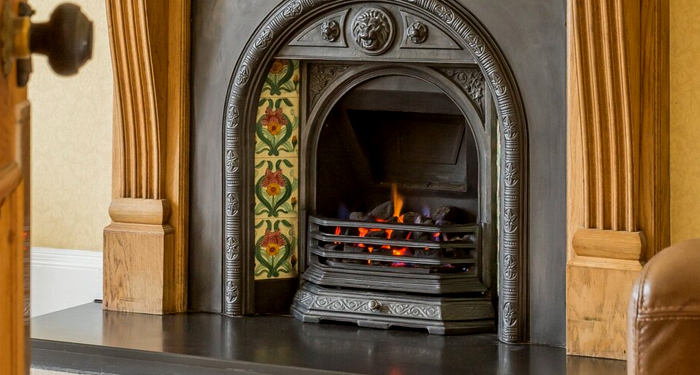
Types of Fire
There are several different types of fire that you can choose from and each type has its own set of advantages and disadvantages.
Below is a list of the different types of fire that you can get alone with their prices and a pros and cons list of each type:
Open Front Gas Fire
An open front gas fire is a popular choice for homeowners looking to combine warmth with visual appeal. This type of gas fire features an exposed flame, mimicking the look of a traditional open fireplace. It comes with various control types, offering flexibility and convenient operation.
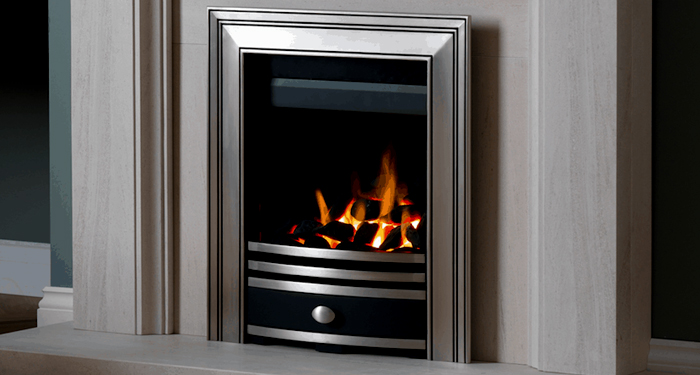
In addition, open front gas fires are available in a wide range of decorative finishes and trims, allowing you to select a style that seamlessly matches your interior design—whether it's classic, contemporary, or something in between.
Pros:
- Aesthetically pleasing with a real-flame effect
- Comes with a number of control options
- Available in a wide range of styles and finishes
- Creates a cosy and inviting atmosphere in any room
Cons:
- Less efficient than other gas fire options
- May require more ventilation and regular maintenance
Outset Living Flame Gas Fire
An outset living flame gas fire is designed to sit on the hearth and extend outward from the wall, making it a prominent feature in any room. Unlike inset models that are partially recessed, an outset fire has a freestanding body that radiates heat more effectively. The appliance itself warms up and emits heat into the surrounding space with high efficiency. This makes it ideal for larger rooms or homes that require robust, consistent heating.
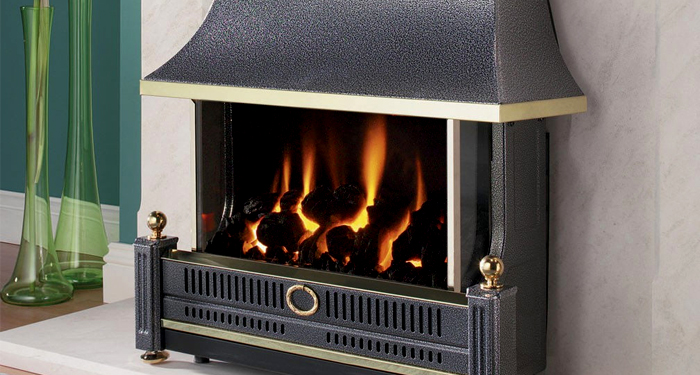
These fires typically feature a visible, realistic flame, adding ambience and charm along with warmth. Outset models are also popular for their user-friendly designs, often equipped with large, accessible controls for easy operation.
Pros:
- Comes with a number of control options
- Features large controls that are easy to handle
- Highly efficient at heating the room
Cons:
- Takes up a lot of space in the room
- May not suit modern, minimalist interiors
- Can limit furniture arrangement options around the hearth
Glass Fronted High Efficiency Gas Fire
A glass fronted high-efficiency gas fire is designed to maximise heat retention and minimise wasted energy. Thanks to its sealed glass front and advanced burner technology, it can achieve efficiency ratings between 80–90%, making it a top choice for homeowners focused on energy conservation and lowering heating bills.
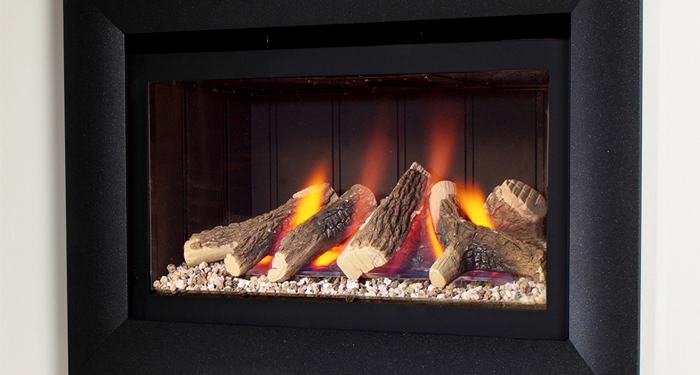
The sealed design reduces heat loss up the chimney and allows more of the generated warmth to be pushed into the room. Despite its energy-saving advantages, it still offers the charm of a visible flame, combining functionality with aesthetic appeal. These fires are ideal for modern homes.
Pros:
- Highly efficient
- Aesthetically pleasing with a clean
- Lower running costs compared to open fronted models
Cons:
- May not give off as much heat as other models
- Glass may require regular cleaning
- Expensive to purchase and install
Flueless Gas Fire
Flueless gas fires are a versatile and efficient heating option, especially suited to homes without a chimney or flue system. These are designed to operate safely without external venting by using advanced clean-burning technology. A built-in catalytic converter cleans the combustion gases, converting harmful carbon monoxide into harmless carbon dioxide and water vapour. This ensures that the air released back into the room is safe to breathe.
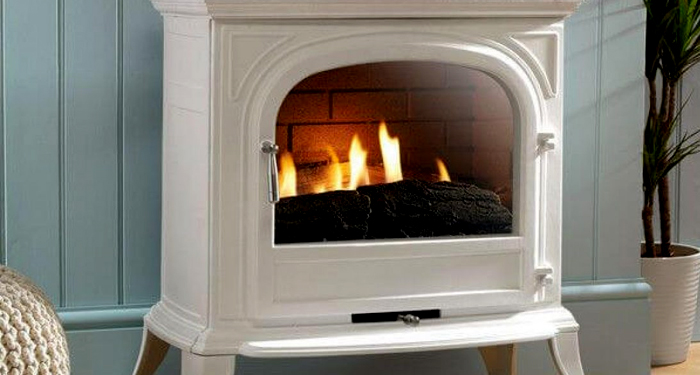
Flueless fires are compact, easy to install, and can be wall-mounted or freestanding, offering flexibility in placement. They are also among the most energy-efficient gas fires available, as no heat is lost through a flue.
Pros:
- Doesn’t require a chimney
- Very efficient
- Easier and more cost-effective to install
Cons:
- Relies on a catalytic converter
- Limited heat output compared to some flued models
- Room must be properly ventilated to meet safety standards
Balanced Flue Gas Fire
A balanced flue gas fire is an excellent solution for homeowners who want the warmth and ambience of a gas fire without the need for a traditional chimney. This type of fire is a sealed unit that draws air from outside and expels combustion gases directly back out through a specially designed flue system, which passes through an external wall.
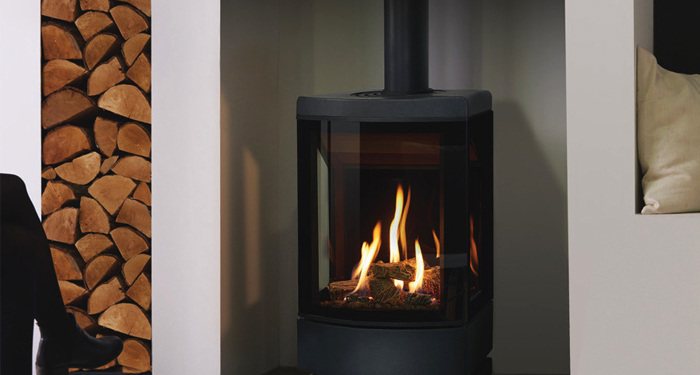
Because the combustion process is entirely sealed off from the room, balanced flue fires are very safe and operate with high efficiency. They are ideal for modern, well-insulated homes and are available in both inset and freestanding designs to suit a wide range of interiors.
Pros:
- Allows you to install a gas fire without a chimney
- Highly efficient and reduces heat loss
- Sealed design improves safety and indoor air quality
Cons:
- May be difficult to install
- Typically more expensive
- Less flexibility in positioning
Electric Fire
Electric fires are a budget-friendly and versatile heating solution, making them a popular choice for homeowners and renters alike. They typically have a lower upfront cost compared to gas fires and don't require a flue, chimney, or specialist installation. Most models simply plug into a standard electrical socket, which makes them incredibly easy to set up.
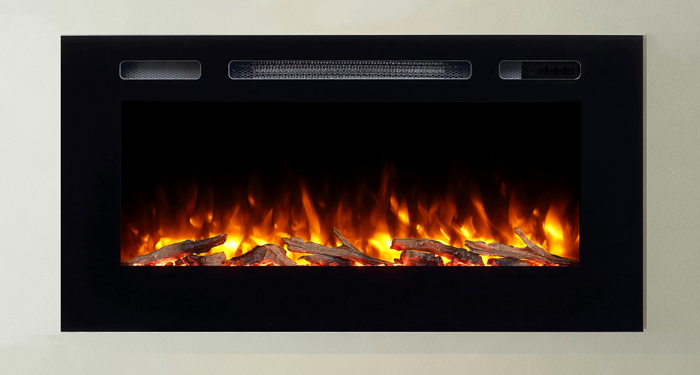
Electric fires are available in a vast array of styles, from traditional flame-effect hearths to ultra-modern wall-mounted units with LED displays and remote controls. However, because they run on electricity—which is generally more expensive per unit than gas—they can have higher long-term running costs, especially if used as a primary heat source.
Pros:
- Cheaper to buy upfront
- Come in a wide range of styles
- Easy and quick to install
- No chimney or flue required
Cons:
- Higher long-term running costs
- Typically offer less heat output than gas alternatives
Benefits of Installing a Fire
There are many benefits of installing a fire at your home. Below is a list of the main benefits of this type of work:
Keeps Your Home Comfortable
No matter how good your heating system may be, there may still be some draughts that flow through your home. A fire can give you some additional warmth to ensure your home stays warm and cosy through the winter months.
Energy Efficiency
If you want to warm your home efficiently, then a fire may be the best option. This can help to keep your energy bills low by providing substantial heat that won’t make a huge dent in your energy bill.
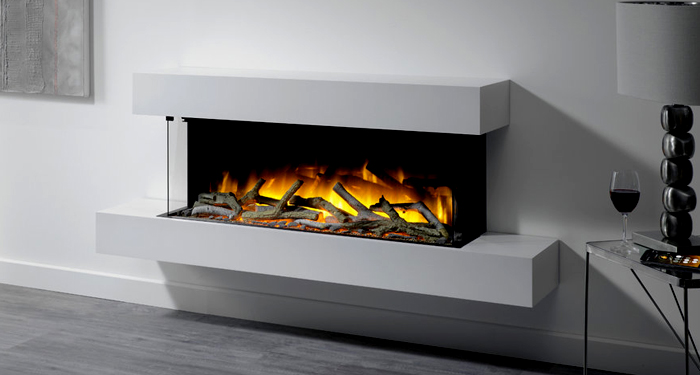
Beautiful Home Addition
Fireplaces tend to look very inviting and beautiful. When entertaining guests, they will generally gravitate towards a roaring fire, particularly in the winter months. A fireplace can make a huge statement in the main room in your home and provides a very cosy feel.
Gas vs Electric Fireplaces: Which is Right for You?
When choosing a new fireplace, one of the biggest decisions is whether to opt for a gas or electric model. Both have their own benefits and considerations when it comes to installation, running costs, maintenance, and aesthetics.
Let's take a look at the pros and cons of each:
Gas Fireplaces - Pros:
- Real Flame: Gas fires offer a realistic flame effect and instant heat
- Efficient Heating: Great for heating medium to large rooms quickly
- Lower Running Costs: Cheaper to run, especially on a mains gas supply
Gas Fireplaces -Cons:
- Professional Installation Needed: Must be installed by a Gas Safe registered engineer
- Ventilation Required: Some models need a flue or chimney
- Higher Upfront Cost: Installation can be more complex
Electric Fireplaces - Pros:
- Easy Installation: Often plug-and-play
- Low Maintenance: No servicing, no emissions, and no venting needed
- Flexible Placement: Can be installed on any internal wall
Electric Fireplaces - Cons:
- Running Costs: Generally more expensive to run than gas
- Heat Output: Typically heats smaller areas
If you’re looking for a real flame, high heat output, and have a gas connection, a gas fireplace could be ideal. For those who want a hassle-free, modern solution with easy installation, an electric fire is a great option, especially in homes without a chimney or gas supply.
How much Does It Cost to Remove a Fire?
Removing an electrical fire can be quite easy as most electrical fires tend to only require a simple plug and then they can be moved away.
A gas fire removal is a more difficult job and can be quite dangerous if not completed correctly. This type of work should be left to a professional Gas Safety engineer to ensure the removal is safe.
The average cost to remove a gas fire is around £100-£400. The overall cost will depend on the type of fire, the difficulty of the job, and your location in the UK.
If you are completely removing your fire, then you may also need to think about removal costs. The waste removal of a fire will usually cost around £100-£600 depending on the size of the fire and how much additional waste there is such as tiles or other hearth elements.
FAQs
Q: How do you clean a fire?
A: The best way to clean a fire is to keep on top of dusting the fireplace. You may also need to clean soot from the fire. To do this, you will need to allow the fire to cool down.
Then, grab a waste bin or bag and sweep out all of the soot and ash from the floor and walls of the fireplace and dispose of them. You can also spot clean areas of your fireplace with soap and water.
Q: How do you remove a fireplace hearth?
A: In most cases, the hearth will have been laid after the fire surround, so you should begin by removing this first. Use a bolster chisel and club hammer to break the bond and lever it out of place. The hearth should break away in one piece and you will be able to drag it away.
Q: How much does it cost to run a real flame gas fire?
A: A real flame gas fire will usually cost around 5p per KW to run. However, this cost can vary based on several factors:
- Type of Gas Used
- Efficiency Rating of The Fire
- Heat Output
- Usage Time
- Tariff Rates
Q: Do I need a fire guard for an open gas fire?
A: Yes, using a fire guard is strongly recommended, especially if you have young children or pets in your home. While open gas fires are generally safe when used correctly, they still produce real flames and high heat, which can pose a burn risk or fire hazard if accidentally touched or knocked.
Even with a guard, it’s important to supervise children and pets around any open flame. Safety should always be a top priority when using a gas fire.
Q: What are gas fire coals made from?
A: Modern gas fire coals are typically artificial and made from heat-resistant ceramic fibre, refractory cement, or ceramic fibre strands. These materials are specially designed to withstand high temperatures without degrading, while also mimicking the look and glow of real burning coals.
Artificial coals are purely decorative and play an important role in how the flames are distributed in a gas fire, helping to create a realistic flame pattern and glowing ember effect. They don’t burn or produce heat themselves—instead, the gas flame heats them, causing them to glow.

